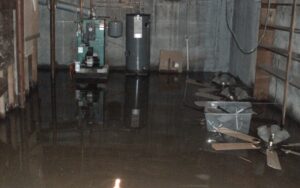Love your appliances, and they’ll love you back.
Clothes and linens are laundered, dishes are sparkling clean, and that shower was nice and warm all thanks to the convenience of household appliances. These marvelous inventions continue to evolve and strike our fancy with new high tech features, all working to make our daily lives easier. However, any of these wonderful amenities can be a serious water damage disaster just waiting to happen. How can you avoid the costly damage? Routine care and servicing will keep your house hold appliances working safely and properly. Add a few extra preventative measures and some safeguards in case anything does happen, and you’ll be able to continue using these lovely conveniences with peace of mind.
Washing Machines
One of the biggest culprits of water damages are one of our favorite inventions ever, the washing machine. They can leak internally, front loaders can lose their spin and not drain properly, and the hoses connecting to the water supply can go. The best ways to prevent a water damage from happening because of your washer are:
- Turn the water supply to the washer off when you are not home, especially if you are going away for a few days or on vacation. Consider installing an automatic shutoff valve.
- Inspect your hoses seasonally. You’re looking for drips and dampness around the fittings, or on the flooring below. Replace the hoses every 5 years.
- Keep the machine at least 4 inches from the wall to prevent damage to the hoses such as crimping.
- Make sure the washing machine is draining properly. If you notice your clothes are still pretty heavy and wet, or just aren’t as wrung out as they used to be, you should have the machine serviced before it stops spinning all together.
Water Heaters

Water heater causes water damage in Eastham, MA home
Your hot water heater may be working much harder than you think. Time takes a toll on these great units, corroding them in areas both visible and not. For the corrosion you can’t see, the best thing to do prepare for the worst. Install an automatic shutoff valve and a sump pump. Should the unit fail and open a continuous water flow into your home, this will minimize the damage by stopping the flow before you may notice it, and the pump will drain any standing water. You could also make sure that any water that does erupt from the unit is guided to the sump pump or drainage system area. It is important to keep track of the age of your water heater. Of course, the older it gets, the more you need to pay attention to the red flags of it starting to fail. What are you looking for during your frequent inspections of the unit?
- Any signs of any wear on the system whatsoever.
- Noises such as hissing, rumbling, or whistling.
- A reduction in the water temperature from the faucet or in the time it takes to heat up water after it runs out. My favorite way to test this is to run a nice hot bath!
- Rusty water.
- Leaks, drips, or moisture around the fittings and flooring below.
- The age of the water heater could be coded as the serial number on the manufacturer’s sticker. Check the manufacturer’s website to decode the date, but sometimes, wherever the first letter sits in the alphabet refers to the month, and the first two digits after the letter represent the year. If it’s older than 10 years, consider replacing.
It’s never a bad idea to call the heating and cooling technician if you find even the slightest sign of wear or damage. If you see any major signs, you should have the heater replaced.
Dishwashers
Dishwashers can cause both sudden dramatic water damages, and slow, stealth leaks that can easily go unnoticed, eventually compromising your flooring, walls, and surrounding structure.
- Just like your washing machine hoses, you want to inspect your dishwasher hoses regularly for leaks, exterior moisture, or damage of any kind including deterioration. Add this to each of your seasonal to do lists.
- Check for rust. You should never find any rust around the dishwasher, and if you do, water is getting into places it shouldn’t.
- Only run the dishwasher when someone is home. The best way to mitigate a water damage is to immediately prevent more water from flowing, and dry the area out as quickly as possible. If you’re off to work and the hose cracks mid-cycle, instead of clean dishes to come home out, you could potentially be looking at 6-8 long hours of costly damage.
Ice makers
Ice makers, like a small leak in a dishwasher hose, can be another sly culprit of a large scale water damage. And what comes with prolonged dampness? Mold! Plastic hoses feeding water into the ice maker are easily pinched, and can become corroded or damaged over time.
- Check the hoses seasonally for signs of cracks, pinches, or any sort of damage. Replacing them could only cost around $6-15, but the damage that can happen by not replacing them can become thousands.
- Instead of plastic tubing, replace the water supply line with different material such as copper or stainless steel.
- Replace any tubes that you think are 10 years old or older.
- Install a flood alarm. These units go from basic models to new fancy ones that you can even connect to your smartphone. They’ll sound off and notify you if there’s an increase in moisture.
Overall, with proper maintenance and a close eye on the potential sources, you can severely lessen your chances of falling victim to an appliance water damage If you have any questions, please feel free to send us a message and we’ll be happy to respond! More often than not, there are pleanty of others wondering the same thing.





